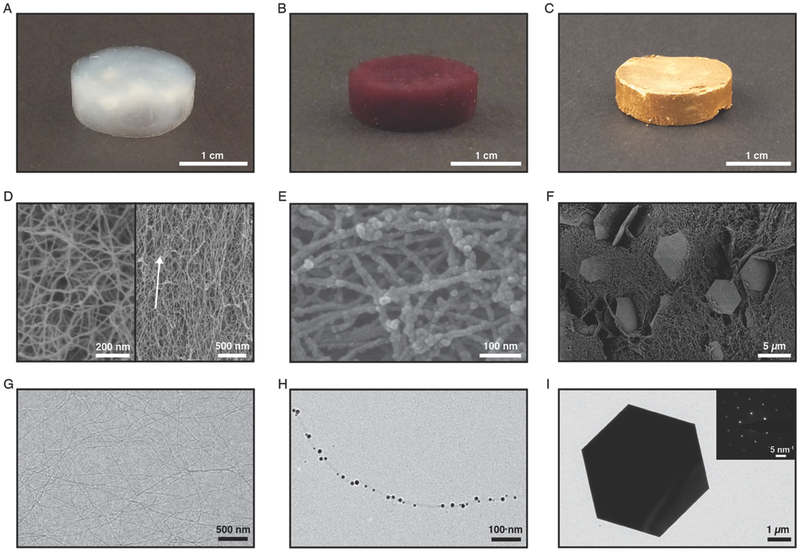Amyloid Templated Gold Aerogels
Nyström, G., Fernández-Ronco, M. P., Bolisetty, S., Mazzotti, M. and Mezzenga, R., Advanced Materials (2015)
Abstract
Amyloid fibril-based ultralow-density aerogels are designed by functionalization with gold nanoparticles and microcrystals, leading to hybrids of unprecedented lightness and functionality. By changing the colloidal gold shape, size, and concentration, the gold composition can be tuned to reach contents ≥20 kt equivalent, yet at densities ≈103 lighter than any equivalent gold alloys, and combining unique features such as porosity, catalytic properties, pressure sensing, and autofluorescence.

Photographs and electron microscopy of the amyloid and gold amyloid hybrid aerogels. A–C) Photographs of an amyloid aerogel, a gold nanoparticle amyloid aerogel, and a gold crystal amyloid aerogel. D–F) Scanning electron microscopy (SEM) images of the amyloid aerogel from 10 g L−1 (D, left) and 30 g L−1 (D, right) hydrogel fibril concentration, E) of the gold nanoparticle amyloid aerogel, and F) of the gold crystal amyloid aerogel. G–I, Transmission electron microscopy images of G) bare amyloid fibrils, H) an amyloid fibril decorated with gold nanoparticles, as well as I) a gold single crystal platelet including selected area electron diffractogram (inset).

Schematic of aerogels preparation. A) Self-assembly of β-lactoglobulin into amyloid fibrils by incubation. B) Equilibration of chloroauric acid on the surface of the fibrils. C) Preparation of pristine aqueous amyloid fibril dispersions. D) Nucleation of gold nanoparticles on the surface of the fibrils by addition of sodium borohydride. E) Heat-induced protein-assisted reduction of 2D gold macrocrystals. F) Dispersions are turned into freestanding gels by salt addition. G) The gels are solvent exchanged to ethanol followed by supercritical CO2 (scCO2) drying to form aerogels.